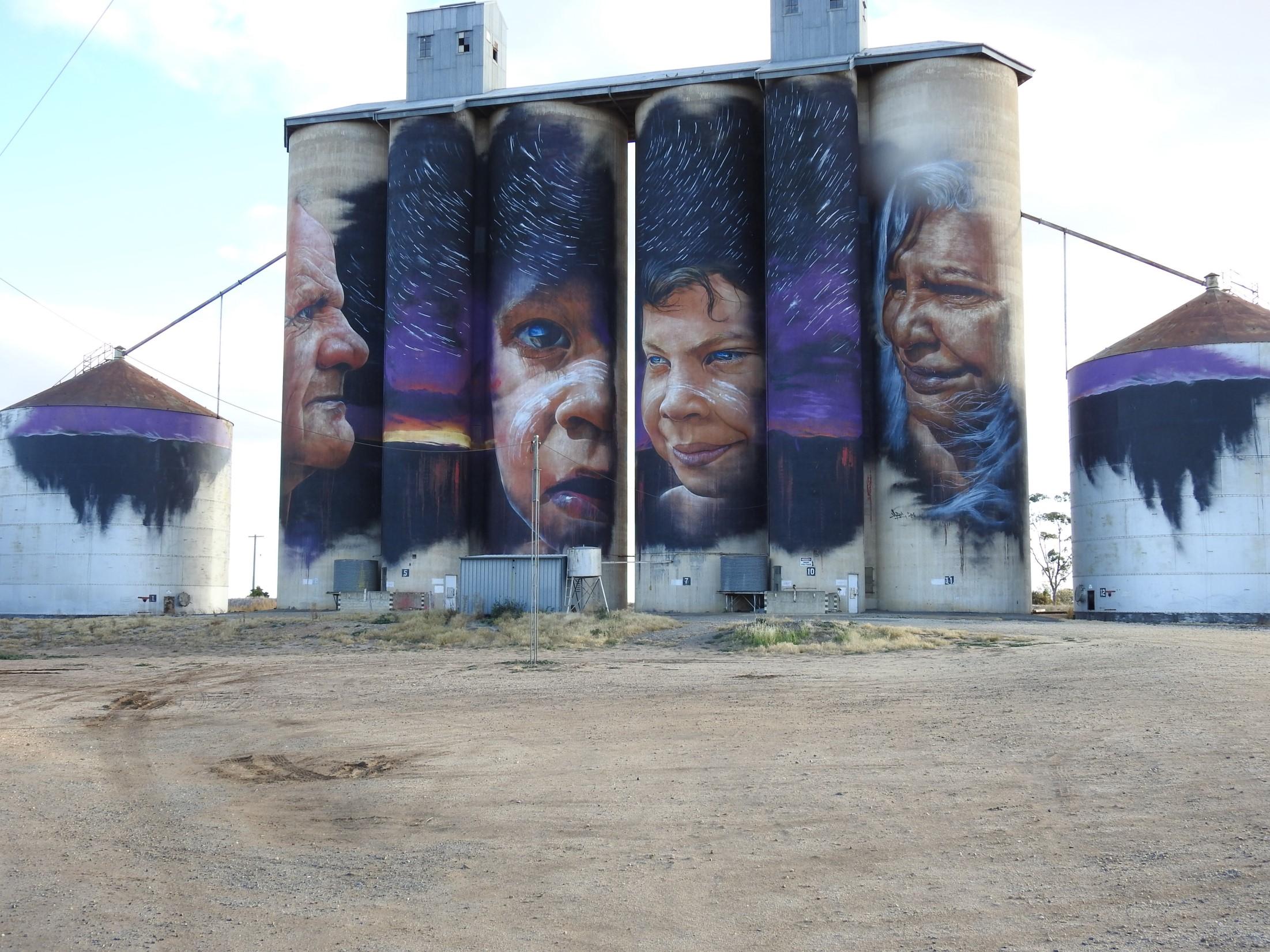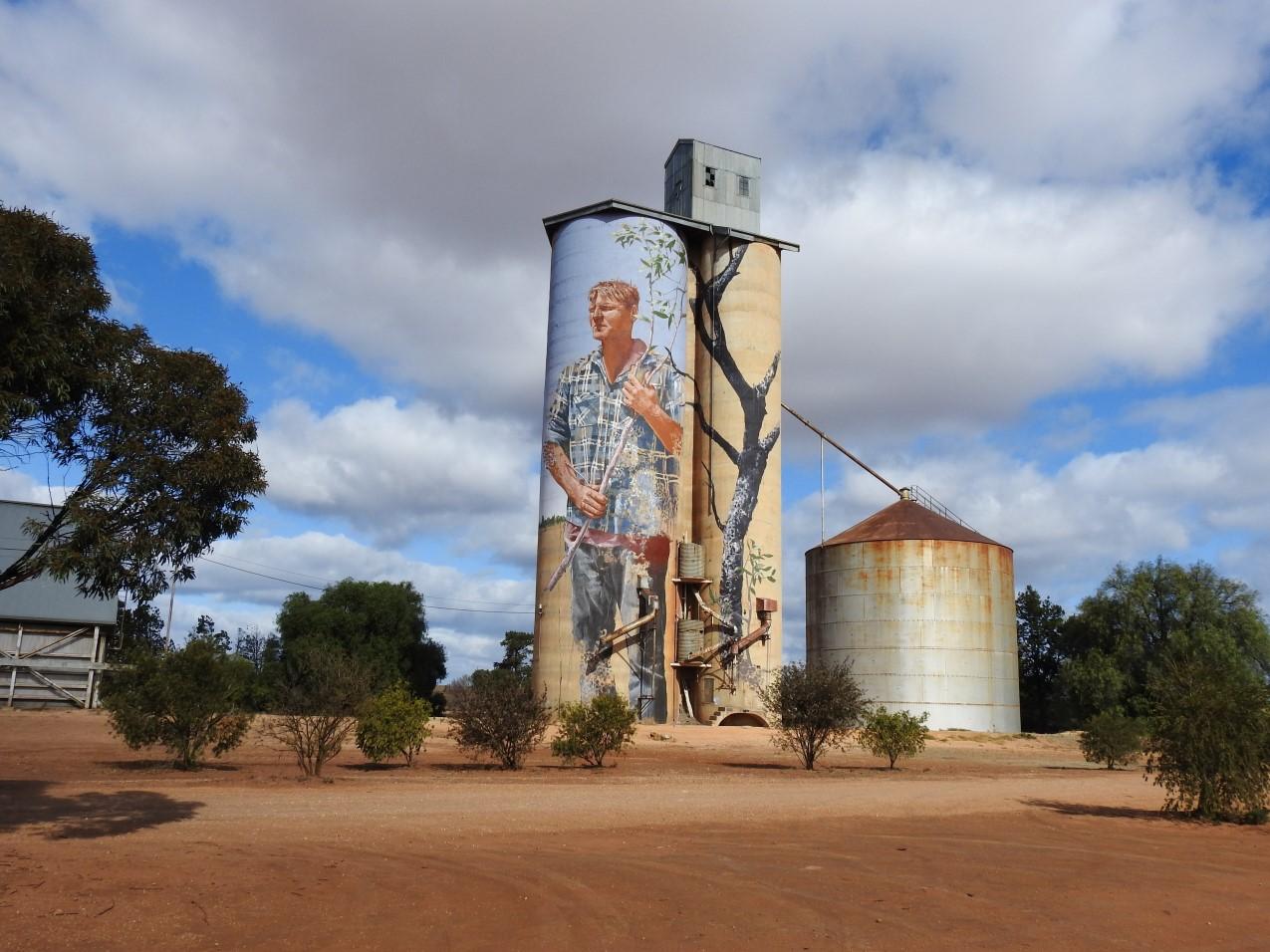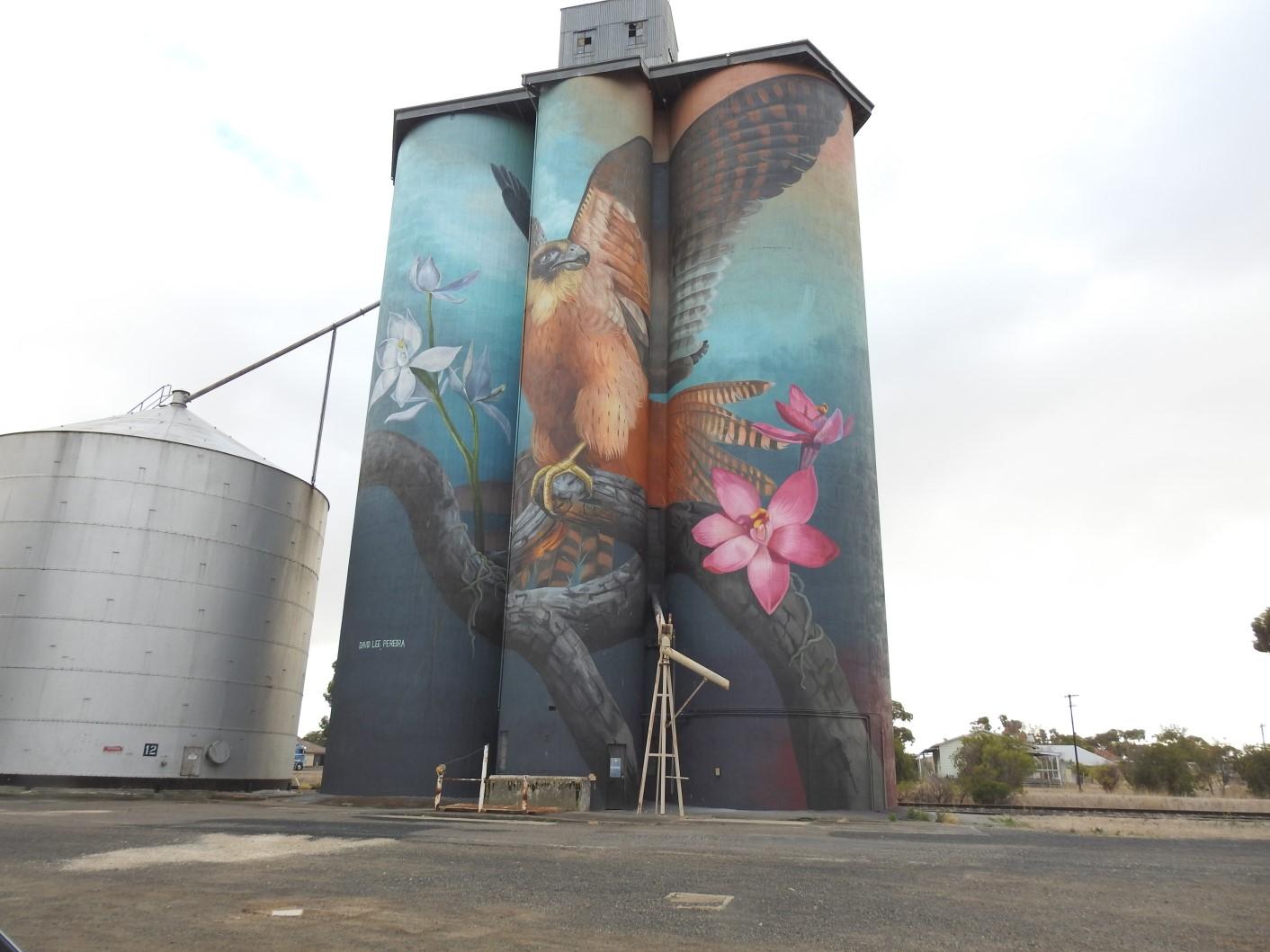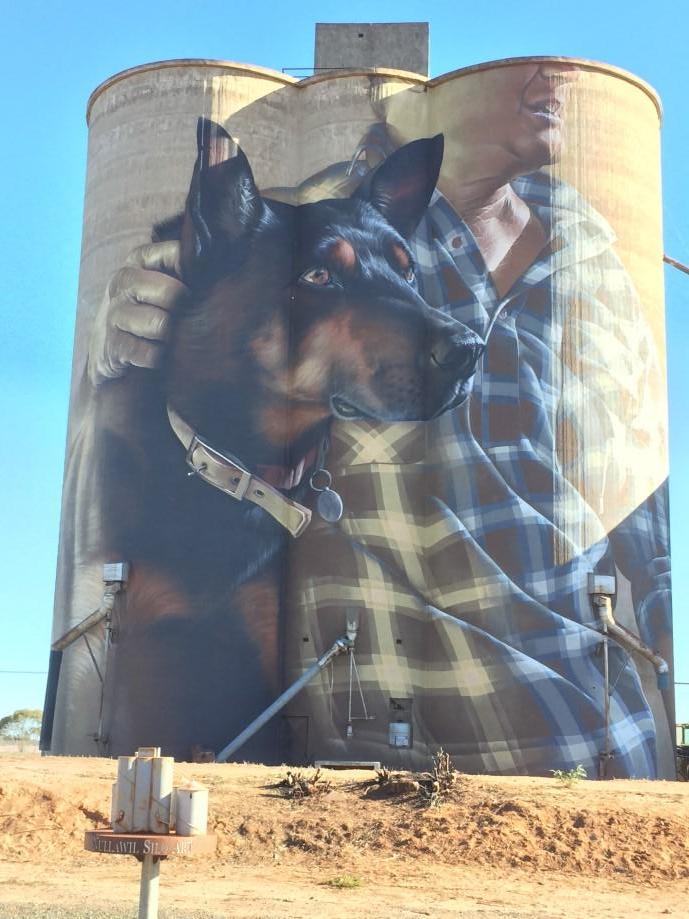
5 minute read
The Silo Arts Trail
A REGIONAL ROAD TRIP The Silo Ar ts Trail
By Penny Edmanson
Advertisement
Travellers on the Geelong Ring Road could hardly fail to have noticed the wonderful portrayal of three local individuals Corrina Eccles, Cor Horsten and Kelly Cartwright that appeared on the cement works’ silos at Fyansford.
Created by home-grown street artist Rone in December 2017, they were sadly demolished in 2020.
Amazed by the realistic depiction and awed by the sheer scale of the work, I started to delve further into such art installations across the state. What better excuse for a holiday than to visit parts of Australia’s largest outdoor gallery. It turned out to be the perfect regional road trip over five days, and could easily be modified or lengthened as desired.
The Silo Arts Trail, conceived in 2016 after the completion of the first silo artwork in Brim, recognises and celebrates hard-working rural communities through a series of largescale mural portraits painted on grain silos.
At the height of the farming boom, these silos were central to each town as farmers could catch up with their neighbours when bringing their wheat in after harvest. With changes to the industry, these silos became defunct and the art scheme provided an opportunity to acknowledge the town’s history, as well as celebrate the local community.
With more and more people following ‘The Trail’, it has also provided a welcome injection into the regional economy.
Australian mural artist Adnate’s silo artwork at Sheep Hills.
My friend and I made an early start as we knew it would be the longest leg of our travels, with our destination being Mildura.
However, the tourist mode kicked in quite close to home, with a stop at The Great Ocean Road Chocolaterie for some chocolate-coated freeze-dried strawberries, and at Freshwater Creek Cakes for some melting moments. Then properly on the road, we took the Midland Highway to Ballarat and on to the Pyrenees region and our lunch destination of Avoca. Avoca is a lovely town with many historic buildings dating from the gold rush era. It is becoming known as an antiques and collectables centre and is perfectly situated for visiting the many Pyrenees wineries. Ours being an art trail not a food and wine trail, we resisted the temptation and instead sought out Avoca’s ‘Famous Pyrenees Pies’. We weren’t game enough to sample the gourmet pies such as crocodile, emu and camel (all seeming a bit far from home) but could recommend the more mainstream fare.


Our first silo was at Nullawil so we continued on the Sunraysia Highway to St Arnaud then Wycheproof and Nullawil. Here we were astounded by the creation of Sam Bates (Smug) who transformed the face of the 80-year-old concrete silo with a giant yet incredibly lifelike portrayal of a kelpie sheepdog and farmer.
A quick stop at Sea Lake found a very different mural: a young girl swinging from a eucalyptus tree gazing over Lake Tyrell. Lake Tyrell itself is worth a visit. It is a unique salt lake only 7 km north of town which, pre-COVID, had become a popular destination for Asian tourists because of the stunning photographic opportunities, particularly at sunrise and sunset.

Our destination for the next few hours was Mildura and we were relieved when the Mallee scrubland gave way to grape vines and citrus, just as we were starting to worry about the setting sun and wayward kangaroos.
Mildura is indeed like an oasis in the desert: a bustling regional city with agriculture its backbone since the Chaffey brothers first experimented with irrigation in the late 1800s. An added bonus is its warm and stable weather – most welcome to us and fellow visitors from the south.
Our accommodation was the stately Grand Hotel. Ideally situated in the heart of Mildura and opposite the beautiful Murray River, it provided a great base for morning walks along the excellent river walking paths, and even a day trip to Mungo National Park. Back on ‘The Trail’, we headed out of the Mallee and into the Wimmera towards our night’s accommodation at Dimboola. On the way we visited the silo art at Patchewollock, Lascelles, Rosebery, Brim and Sheep Hills.


All these once flourishing farming towns now have populations of less than 200, so the increasing tourism generated by the silo art is welcome. The portraits are the work of worldrenowned Australian mural artists: Adnate, Kaff-eine, Fintan Magee, Rone, Guildo van Helten, and celebrated Russian street artist Julia Volchkova.
Although the works are united in their use of the iconic silos and the Australian flavour of their subject matter, each artist has approached his/ her task differently.
At Sheep Hills Adnate has used rich colours on a black base to portray four indigenous faces on a starry background, where many others are quite monochromatic.
In some instances the work is governed by the nature of the silos themselves. Local farmer ‘Noodle’ Holland was chosen for Fintan Magee’s artwork at Patchewollock par tly because he was slim enough to fit on the two narrow silos!
Arriving at our night’s accommodation – The Victoria Hotel, Dimboola – we felt we had entered a bit of a time warp. Built in 1924 and described at the time as ‘an attribute and ornament to the town’, it has retained its stately feel with wide lacework verandahs, ornate pressed metal ceilings and open fireplaces. Accommodation was quirky but comfortable (if you don’t mind shared bathroom facilities) and only a climb up the stairs to bed after a delicious pub meal.
A quick look at Dimboola’s Pink Lake at sunrise and then on to our last day of silos. This time we headed to our most westerly destinations of Kaniva and Goroke for two mor e r ecent additions to the trail.
The Kaniva artwork pays tribute to the nearby Little Desert and its diverse flora and fauna. More brightly coloured than some of the silos we’d seen, the Australian Hobby bird cleverly spreads its wings over the curves of the triple silo and atop the depictions of local orchids.
Again in Goroke, artist Geoffrey Carran was heavily inspired by the birdlife in the West Wimmera Shire. The word Goroke is the local aboriginal word for magpie so it is fitting that a magpie features along with a kookaburra and a galah.
Our final artwork was in Rupanyup. Here Russian mural artist Julia Volchkova identified the importance of team sport in a rural community and featured the faces of two young Rupanyup sporting team members in a monochromatic work on a squat pair of conjoined steel silos.
A night in Beaufort and a return to the cold weather of ‘the south’ then an easy amble back to Anglesea. Our road trip was over but plans were already being made for another, to visit the silos of north-east Victoria.










